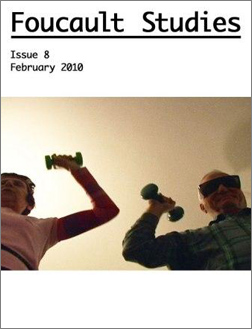Stations of the Self: Aesthetics and Ascetics in Foucault’s Conversion Narrative
DOI:
https://doi.org/10.22439/fs.v0i8.2933Abstract
Based primarily on his 1981-1982 course, The Hermeneutics of the Subject, I contend that Michel Foucault’s robust treatment of ancient models for self-salvation answers his systematic problem of a lost spiritual art of living primarily through a sustained dichotomy between the Hellenistic-Roman and Christian models of conversion. In this way his intended recovery of an aesthetic-ascetic spiritual “resistance” is accomplished through a methodology of resistance. He relies on an accelerating arrangement of polarities between the aim and practice of immanent self-return and what he takes to be the coercive discourses of transcendent self-renunciation. Though such historiography may raise questions for some readers, my aim is simply to show how, for Foucault, the dichotomizing is necessary for grounding his own understanding of the art of ”conversion.”Downloads
Published
2010-02-01
How to Cite
Yates, C. (2010). Stations of the Self: Aesthetics and Ascetics in Foucault’s Conversion Narrative. Foucault Studies, (8), 78–99. https://doi.org/10.22439/fs.v0i8.2933
Issue
Section
Articles
License
Authors retain copyright to their work, but assign the right of the first publication to Foucault Studies. The work is subject to a CC BY-NC-ND 4.0 license, but despite these restrictions, authors can take for granted that Foucault Studies will permit articles published in Foucault Studies to be translated or reprinted in another format such as a book providing a full reference is made to Foucault Studies as the original place of publication.



